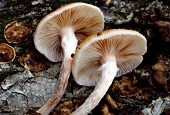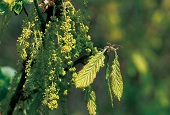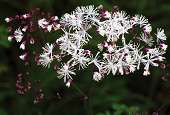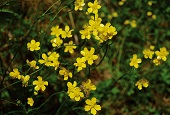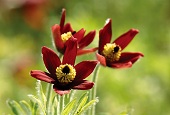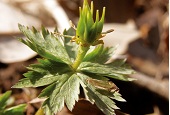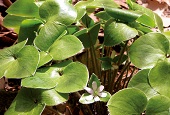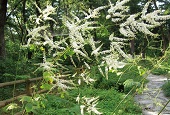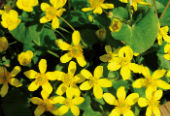View this article in another language
- 한국어
- English
- 日本語
- 中文
- العربية
- Español
- Français
- Deutsch
- Pусский
- Tiếng Việt
- Indonesian
Flora & Fauna of Korea #35
Korea.net publishes a series of articles, “Nature You Meet in the Mountains,” about the peninsula’s mushrooms, insects, trees and herbs & flowers.
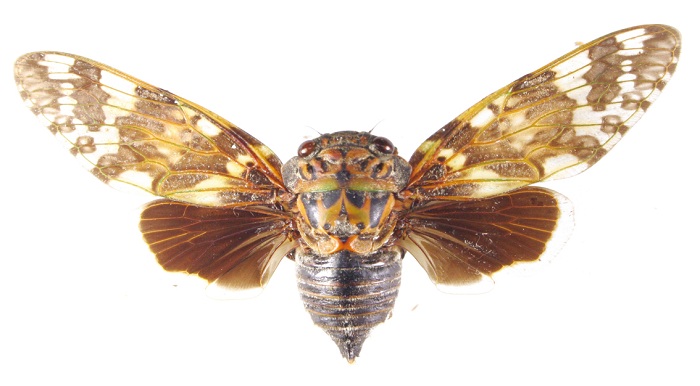
Insects
Name: 털매미, Turmaemi
Scientific name: Platypleura kaempferi (Fabricius)
Distribution: Korea, Japan, Taiwan, Kuril Island, Malaysia and Borneo Island
This cicada is about 20 to 25 millimeters long and its wing span is around 35 to 40 millimeters. It is black brown in color with white power scattered across its entire body. The mesonotum, a part of the exoskeletal plates in the thorax, is glossy black with W-shaped patterns in green or reddish brown. The forewings are glossy, too, with cloud-like patterns in black brown and reddish brown. Normally, the connecting parts between the body and wings develop patterns in gray-yellow, similar to the barks of trees, and function as a camouflage.
Ecology: This cicada is widely observed in and around cities, towns and mountains. The adults are most active during August. The nymphs tend to inflict injuries to the roots of broadleaved trees such as willows and poplars. Sometimes, adults spawn on apples, causing damage to farmers.
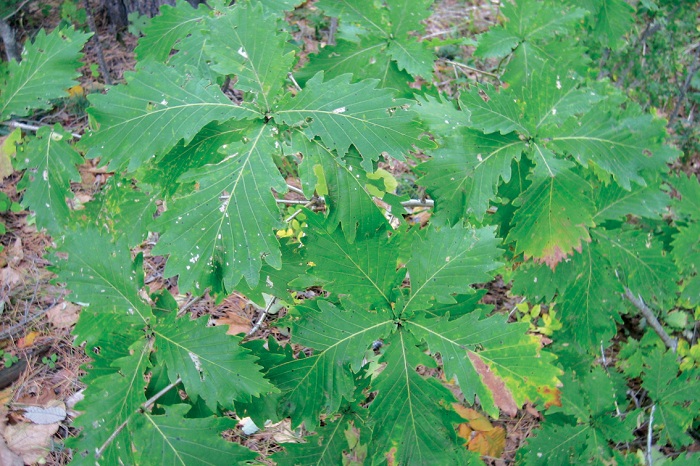
![140827_korea_nature_20].jpg](/upload/content/editImage/140827_korea_nature_20].jpg)
Trees
Name: 신갈나무, singalnamu
Scientific name: Quercus mongolica Fisch. ex Ledeb.
Type: deciduous broadleaf tree
Blooming season: April to May
Bearing season: September to October
Distribution: mountains nationwide
This tree is commonly known as the Mongolian oak. The species can grow to 30 meters in height and one meter in diameter. The bark is dark gray. The leaf shapes alternate between obovate, obtuse and auriculate, and develop dull sawtooth patterns along their edges. It is a monoecious tree, giving bloom to female flowers with upright catkins. It bears oval-shaped nuts.
It can be used in food, and also for construction of architecture and furniture.

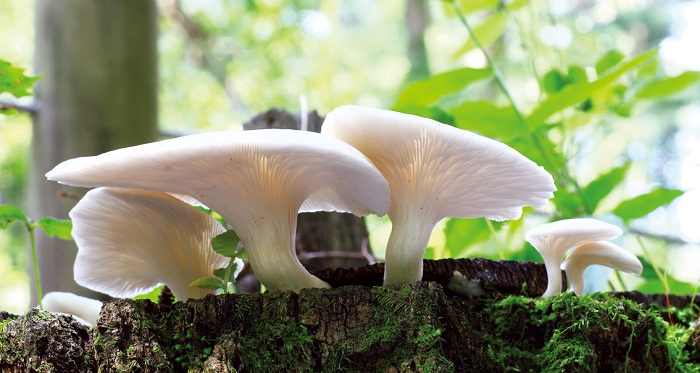
Mushrooms
Name: 산느타리, Mountain Agaric
Scientific name: Pleurotus pulmonarius (Fr.) Quel.
Type: saprophile spore
Print: white
Edible
This mushroom grows in clusters from the stumps of fallen and dead broadleaf trees. It resembles the oyster mushroom, but consists of smaller spores, thinner tissues and differentiates itself from other species by the changing colors of its cap. The cap is white or light grayish brown at first and then turns to white or light yellow. It is about 1 to 3 millimeters thick in the center and smells like flour. The pleats are densely arranged. It is white at first and turns cream and yellowish green with the passage of time.
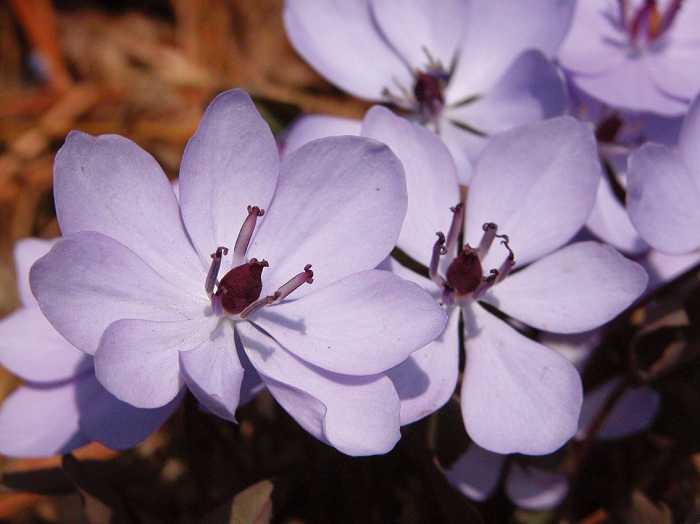
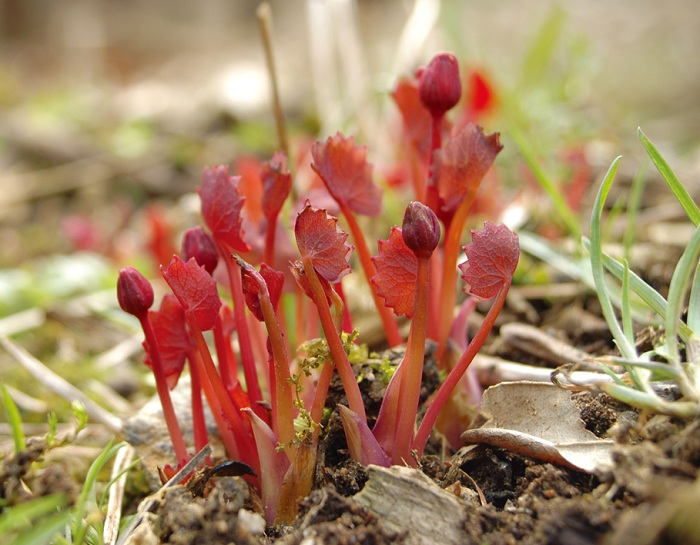
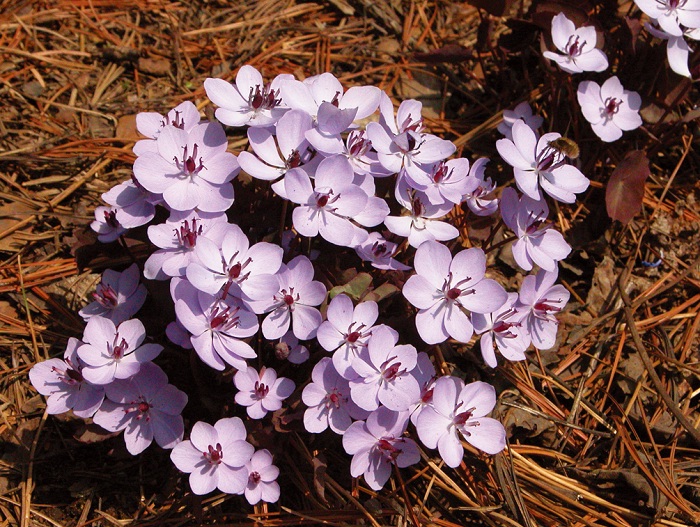
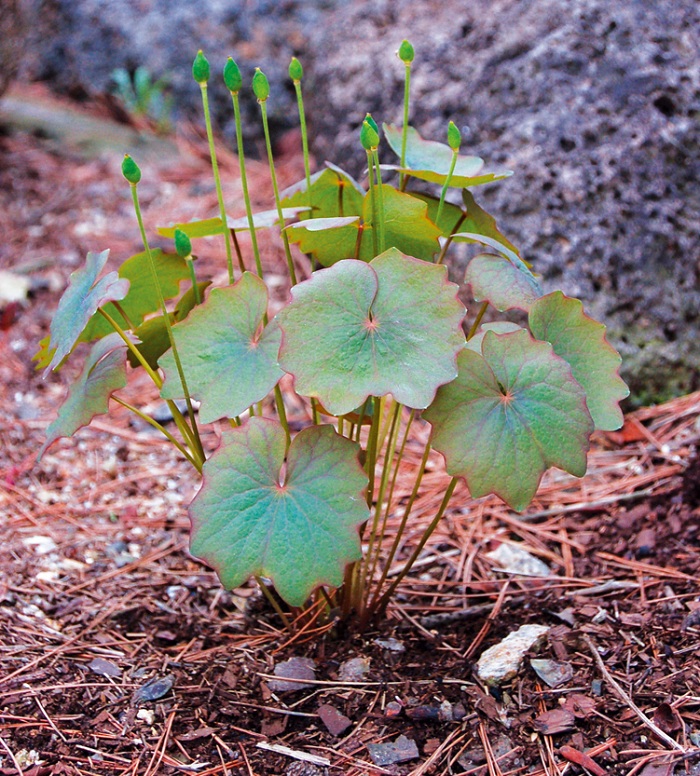
Herbs & Flowers
Name: 깽깽이풀, Kkaengkkaengipul
Scientific name: Jeffersonia dubia (Maxim.) Benth. & Hook.f. ex Baker & S.Moore
Full bloom: April to May
Distribution: mountains in north and central parts of the peninsula
This mountain perennial grows to between 20 and 30 centimeters high. The leaves develop in clusters from the basal parts of the stems. The leaves are orbicular, growing from the ends of long leafstalks. Some rippling curves are found on the center of the leaves. It blooms purple flowers, which appear before the leaves grow. The flower has six to eight flower petals. It bears wide oval fruit with sleek black seeds. It is a rare plant, whose seeds are propagated by ants.
*This series of article about Korea’s insects, trees, mushrooms and herbs & flowers has been made possible through the cooperation of the Korea National Arboretum.
Korea.net publishes a series of articles, “Nature You Meet in the Mountains,” about the peninsula’s mushrooms, insects, trees and herbs & flowers.

Insects
Name: 털매미, Turmaemi
Scientific name: Platypleura kaempferi (Fabricius)
Distribution: Korea, Japan, Taiwan, Kuril Island, Malaysia and Borneo Island
This cicada is about 20 to 25 millimeters long and its wing span is around 35 to 40 millimeters. It is black brown in color with white power scattered across its entire body. The mesonotum, a part of the exoskeletal plates in the thorax, is glossy black with W-shaped patterns in green or reddish brown. The forewings are glossy, too, with cloud-like patterns in black brown and reddish brown. Normally, the connecting parts between the body and wings develop patterns in gray-yellow, similar to the barks of trees, and function as a camouflage.
Ecology: This cicada is widely observed in and around cities, towns and mountains. The adults are most active during August. The nymphs tend to inflict injuries to the roots of broadleaved trees such as willows and poplars. Sometimes, adults spawn on apples, causing damage to farmers.

![140827_korea_nature_20].jpg](/upload/content/editImage/140827_korea_nature_20].jpg)
Trees
Name: 신갈나무, singalnamu
Scientific name: Quercus mongolica Fisch. ex Ledeb.
Type: deciduous broadleaf tree
Blooming season: April to May
Bearing season: September to October
Distribution: mountains nationwide
This tree is commonly known as the Mongolian oak. The species can grow to 30 meters in height and one meter in diameter. The bark is dark gray. The leaf shapes alternate between obovate, obtuse and auriculate, and develop dull sawtooth patterns along their edges. It is a monoecious tree, giving bloom to female flowers with upright catkins. It bears oval-shaped nuts.
It can be used in food, and also for construction of architecture and furniture.


Mushrooms
Name: 산느타리, Mountain Agaric
Scientific name: Pleurotus pulmonarius (Fr.) Quel.
Type: saprophile spore
Print: white
Edible
This mushroom grows in clusters from the stumps of fallen and dead broadleaf trees. It resembles the oyster mushroom, but consists of smaller spores, thinner tissues and differentiates itself from other species by the changing colors of its cap. The cap is white or light grayish brown at first and then turns to white or light yellow. It is about 1 to 3 millimeters thick in the center and smells like flour. The pleats are densely arranged. It is white at first and turns cream and yellowish green with the passage of time.




Herbs & Flowers
Name: 깽깽이풀, Kkaengkkaengipul
Scientific name: Jeffersonia dubia (Maxim.) Benth. & Hook.f. ex Baker & S.Moore
Full bloom: April to May
Distribution: mountains in north and central parts of the peninsula
This mountain perennial grows to between 20 and 30 centimeters high. The leaves develop in clusters from the basal parts of the stems. The leaves are orbicular, growing from the ends of long leafstalks. Some rippling curves are found on the center of the leaves. It blooms purple flowers, which appear before the leaves grow. The flower has six to eight flower petals. It bears wide oval fruit with sleek black seeds. It is a rare plant, whose seeds are propagated by ants.
*This series of article about Korea’s insects, trees, mushrooms and herbs & flowers has been made possible through the cooperation of the Korea National Arboretum.
